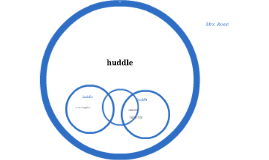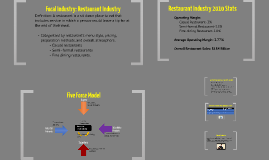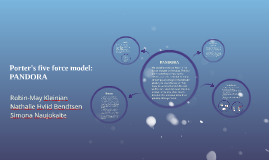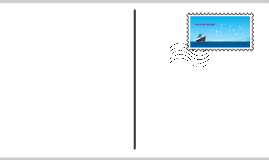Nestle- Porter's Five Force Model
Transcript: NESTLE - PORTER'S FIVE FORCE MODEL ALL ABOUT THE COMPANY INTRODUCTION TO COMPANY Nestle is a Swiss multinational food and drink processing conglomerate corporation headquartered in Switzerland. It is one the biggest players in FMCG segment, with a wide range of 2000 brands selling over 150 countries has a existence in milk & nutrition, beverages, prepared dishes & cooking aids & chocolate & confectionery segments. In India manufactures products under brand names, such as Nescafe, Maggi, Milky bar, Milo, Kit Kat, Bar-One, Milkmaid and Nestea. INTRODUCTION TO COMPANY HISTORY 1866 - US brothers Charles and George Page help establish Anglo-Swiss Condensed Milk Company with the brand name of Milkmaid. 1867 - Nestlé’s founder, German-born pharmacist Henri Nestlé, launches his ‘farine lactée’ (‘flour with milk’) in Vevey, Switzerland.Around this time he starts using the now iconic ‘Nest’ logo. 1875 - Henri Nestlé sells his company and factory in Vevey to three local businessmen. 1878 - Nestlé and Anglo-Swiss start selling rival versions of the other’s original products: condensed milk and infant cereal. Both firms expand sales and production abroad. 1882-1902 - In 1882 Anglo Swiss expands into US. In 1902, it got merged with Nestle. 1904 - Nestlé begins selling chocolate for the first time when it takes over export sales for Peter & Kohler. PRODUCT PROFILE MAIN PRODUCTS OF NESTLE Milk products and nutritions Bevarages Prepared dishes and cooking aids Choclates and confectionaries COMPETITORS COMPETITORS OF NESTLE KRAFT FOODS KRAFT FOODS Kraft Foods is a popular food processing company that was formed during the year 2012. It is headquartered in Chicago and is a part of Kraft Heinz Company. The company mainly focuses on grocery products for the markets in North America. The company manufactures multiple products which are seen in many categories like sauces, chocolates, dairy products, desserts, and many more. DANONE DANONE Danone is a French food processing company that is established in the year 1919 and headquartered in Barcelona, Spain. The company produces various categories of products that cater to baby food, coffee, dairy products, breakfast cereals, confectionery, bottled water, pet foods, ice cream, and dietary supplements. UNILEVER UNILEVER Unilever is a British-Dutch company that is formed during the year 1930 and headquartered in the United Kingdom and Netherlands. It is a consumer goods producer company and their products include food and beverage. It is also into the production of cleaning and personal care products. It is the world’s largest consumer foods company. PATANJALI PATANJALI Patanjali Ayurved Limited is an Indian consumer goods company. Patanjali is the fastest growing FMCG company in India. Patanjali Ayurved produces products in the categories of personal care and food. The company manufactures more than 2,500 products including cosmetic products food products. Patanjali has also launched beauty and baby products. Ayurvedic manufacturing division has over 300 medicines for treating a range of ailments and body conditions, from common cold to chronic paralysis. OTHER COMPETITORS OTHER COMPETITORS Pepsico Kellogg's Mondelez Hershey's Heinz General Mills Lindt Amul PORTER'S FIVE FORCE MODEL Porter's Five Forces is a simple but powerful tool for understanding the competitiveness of your business environment, and for identifying your strategy's potential profitability THREAT OF NEW ENTRANTS (LOW) Diverse food industry. Large market share by existing companies. Developed customer loyalty over time. Developed distribution networks and economics of scale to produce and deliver at lower cost. BARGAINING POWER OF BUYERS (HIGH) Easy switching power of buyer from one brand to other. BARGAINING POWER OF SUPPLIERS (HIGH) Due to large purchasing power, because the suppliers of agriculture commodities offer non unique product, the bargaining power is high. Nestle has ability to bring new business to suppliers. It creates and maintain long term relationship with suppliers to ensure quality of raw materials. THREAT OF SUBSTITUTE PRODUCT (MODERATE) There are many substitute products in the market. eg. Danone and kraft foods. One of the way nestle has made its products unique is making them healthy compare to other food products. RIVALRY OF COMPETITIVE FIRMS (HIGH) Nestle faces intense competition. All the firms spent large amount on marketing and advertisement. The competition is not just about price but product variety, creativity, promotional offers etc. All the players have to strive to retin their market share. There are about 20-25 products which are going to be launched in short time among them some are already launched. The new product includes 7 variants of Maggi noodles, Greek yogurt brand 'Grekyo' and protein growth brand 'Pro-Gro' in dairy segment, besides multiple products in choclates and confectionery, and also in coffee and tea. FUTURE SCOPE Title

















